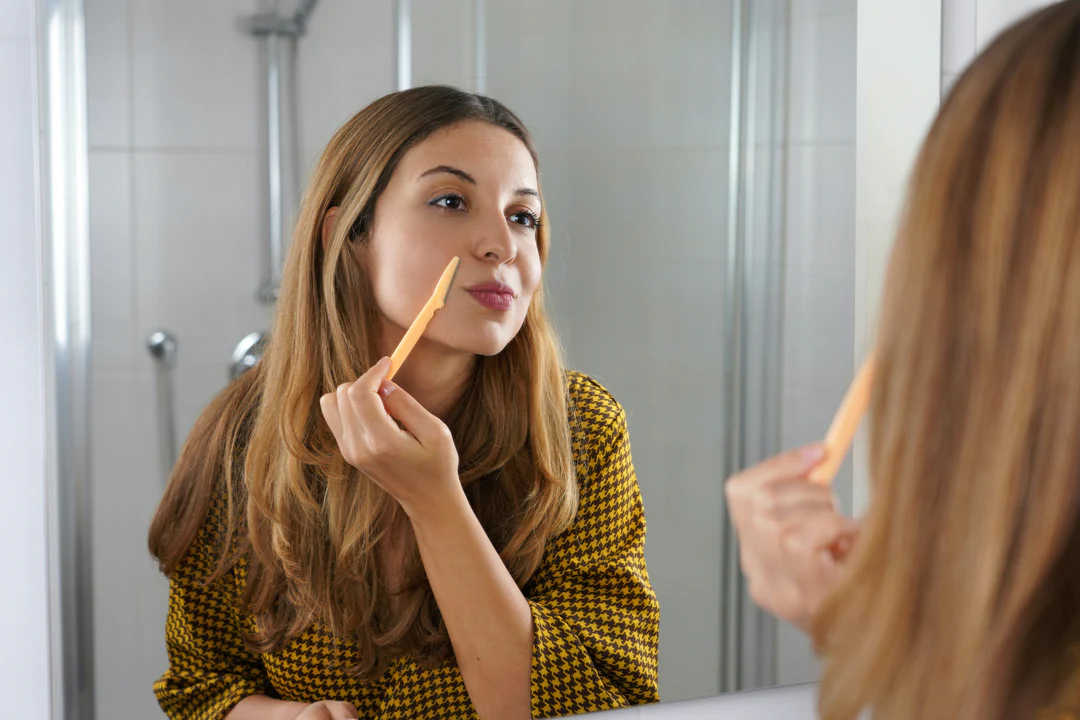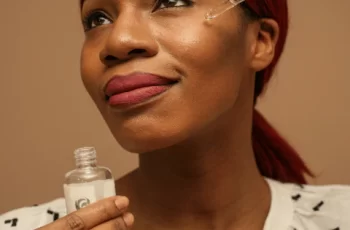
**Can You Have Dermaplaning If You Use Retinol?**
Dermaplaning has gained significant popularity in recent years, but it’s hardly a new beauty treatment. Icons like Marilyn Monroe were known to use this technique to enhance the longevity and appearance of their makeup. Yet, the appeal of dermaplaning isn’t just about makeup—it’s loved for its skin benefits too, especially among those who regularly incorporate it into their skincare routines.
If you’re wondering, “What exactly is dermaplaning?”—here’s a quick rundown of what the treatment entails and the benefits it offers.
### What Is Dermaplaning?
Dermaplaning is a facial treatment where a specially designed surgical blade is used to gently exfoliate the skin by removing dead skin cells and fine facial hair (commonly known as “peach fuzz”). This technique not only leaves your skin feeling smoother and more radiant, but it also improves the absorption of skincare products, allowing them to penetrate deeper into the skin.
Unlike chemical peels or other treatments that require downtime, dermaplaning is a quick, non-invasive procedure with no recovery time, making it an ideal treatment before a big event or as part of a regular skincare routine.
Now that you have a better understanding of dermaplaning, let’s dive into the main question of today’s post: *Can you do dermaplaning if you use retinol?* Keep reading to find out the answer, and if you need a refresher on how retinol works, be sure to check out our dedicated blog post.
### Can I Dermaplane If I Use Retinol?
Yes, you can, but with some important precautions. Retinol is a powerful exfoliating ingredient, and when combined with dermaplaning, which also exfoliates, it can lead to irritation, dryness, and redness if used improperly.
The key is to leave enough time between dermaplaning and the reintroduction of retinol into your skincare routine. Ideally, you should wait about 5 days to a week after dermaplaning before applying retinol again. If you apply retinol immediately after dermaplaning, the skin could become over-exfoliated, leading to irritation and increased sensitivity. Retinol speeds up cell turnover, which, when combined with dermaplaning, can strip the skin’s natural oils (sebum), weakening the skin barrier and making it more vulnerable to environmental damage and irritation.
A simple approach is to avoid using retinol the day before you dermaplane. This will help maintain the skin’s balance of oil and hydration and reduce the risk of irritation. After dermaplaning, you can apply a soothing serum with ingredients like hyaluronic acid or niacinamide to lock moisture into the skin and keep it hydrated.
### How Long After Dermaplaning Can I Use Retinol?
As mentioned, it’s essential to wait at least one week after dermaplaning before using retinol again. This will give your skin enough time to recover and restore its natural moisture balance. In the meantime, you should follow a few aftercare guidelines to ensure the best results and avoid any complications:
– **Avoid sweating:** Refrain from intense exercise for 24 hours after dermaplaning.
– **No saunas or steam rooms:** These can irritate the skin for the first 24 hours post-treatment.
– **Avoid exfoliants:** Don’t use physical scrubs or chemical exfoliating products (e.g., glycolic acid, salicylic acid) for at least 5–7 days after dermaplaning.
– **No makeup:** Avoid applying makeup for 24 hours to allow your skin to breathe and recover.
– **Skip facials:** Don’t schedule facials for at least two weeks after dermaplaning.
– **Gentle cleansing:** Use a mild, non-foaming cleanser, and avoid using muslin cloths or washcloths, which can be too abrasive.
– **Hydrate:** Focus on using hydrating ingredients like hyaluronic acid to maintain moisture and calm the skin.
– **Sun protection:** Protect your skin with an SPF of 30 or higher for at least two weeks post-treatment to prevent sun damage.
By following these aftercare tips, you can help your skin heal properly after dermaplaning and avoid any unnecessary irritation or discomfort.
### When Should You Avoid Dermaplaning?
While dermaplaning is a safe treatment for most people, there are certain conditions and skin types where it’s not recommended:
– **Severe sunburn:** If your skin is sunburned or irritated, it’s best to avoid dermaplaning until the skin heals.
– **Sensitive skin:** If you have extremely sensitive skin or conditions like rosacea, dermaplaning may exacerbate irritation.
– **Active breakouts:** Avoid dermaplaning if you’re experiencing severe acne or active flare-ups, as the treatment may further irritate the skin.
– **Recent use of retinoids:** If you’ve used prescription retinoids (like tretinoin) or strong retinol products in the past 2–3 weeks, it’s best to wait until your skin has recovered before dermaplaning.
If you’re unsure whether dermaplaning is suitable for you, it’s always a good idea to consult with a dermatologist or skincare professional.
### Can I Use Serums After Dermaplaning?
Absolutely! In fact, after dermaplaning, your skin will be more receptive to the nourishing ingredients in serums. To maximize the benefits, look for serums that focus on hydration and calming the skin. Some of the best ingredients for post-dermaplaning recovery include:
– **Hyaluronic acid**: Excellent for locking in moisture and providing hydration.
– **Niacinamide**: Helps reduce redness and irritation while improving skin texture.
– **Vitamin E**: A powerful antioxidant that can soothe and protect the skin.
– **Glycerin**: Attracts moisture to the skin, keeping it plump and hydrated.
In addition to using a hydrating serum, make sure to use a gentle, non-foaming cleanser and always apply sunscreen to protect your skin from UV damage.
### Final Thoughts
Dermaplaning is an effective and low-downtime treatment that can give your skin a fresh, smooth appearance. However, when combined with potent ingredients like retinol, it’s important to give your skin adequate time to recover between treatments. Always follow the proper aftercare steps, and if you’re unsure about how to safely incorporate dermaplaning and retinol into your routine, don’t hesitate to consult with a dermatologist for personalized advice.
For more tips and updates, feel free to follow us on Instagram for the latest skincare insights!


